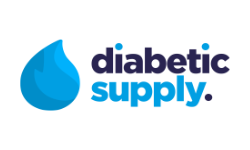Managing type 1 diabetes in cold weather requires some additional considerations to ensure that blood sugar levels remain stable and that you stay healthy. Here are some tips for managing type 1 diabetes in cold weather:
1. Monitor Blood Sugar Levels:
Cold weather can affect blood sugar levels, so it's important to monitor your blood sugar regularly.
Keep a close eye on your levels, especially if you're more active than usual in the cold.
2. Insulin Storage:
Insulin is sensitive to temperature, so make sure to keep it at the recommended temperature range. Extreme cold can affect its effectiveness.
Use an insulated bag or pouch to protect your insulin or keep it close to your body to prevent it from getting too cold.
3. Stay Hydrated:
Cold weather can be dehydrating, and dehydration can affect blood sugar levels.
Drink plenty of water throughout the day, even if you don't feel as thirsty as you would in warmer weather.
4. Protect Your Equipment:
Keep your glucose meter, insulin pump, and other diabetes management tools insulated and protected from the cold as battery life can be affected by the cold.
Cold temperatures can affect the accuracy of glucose meters, so keep them close to your body or in an insulated case.
5. Layer Clothing:
Dress in layers to stay warm, and make sure to keep your diabetes devices accessible. This allows you to manage your diabetes without having to expose too much skin to the cold. Perhaps consider the location of pump and CGM sites for accessibility.
6. Carry Snacks:
Cold weather and increased physical activity can lead to hypoglycemia (low blood sugar). Carry plenty of glucose tablets or other fast-acting carbohydrates to treat low blood sugar quickly.
7. Be Prepared for Emergencies:
Cold weather can sometimes lead to unexpected situations. Keep an emergency kit with extra insulin, syringes, glucose tablets, and other essentials and a medical alert card/insurance details.
8. Regular Meals:
Stick to your regular meal schedule to help maintain stable blood sugar levels.
Carry snacks with you in case you need to adjust your carbohydrate intake based on your activity levels.
9. Communication:
Inform people around you about your condition and let them know how to help in case of an emergency.
10. Adjust Insulin Doses:
Consult with your healthcare team about potential adjustments to your insulin doses during the colder months or consider temp basals if on a non-automated insulin pump.
Always consult with your healthcare team for personalised advice on managing type 1 diabetes, as individual needs may vary. Regular communication with your healthcare provider is crucial for adapting your diabetes management plan to different environmental conditions.

